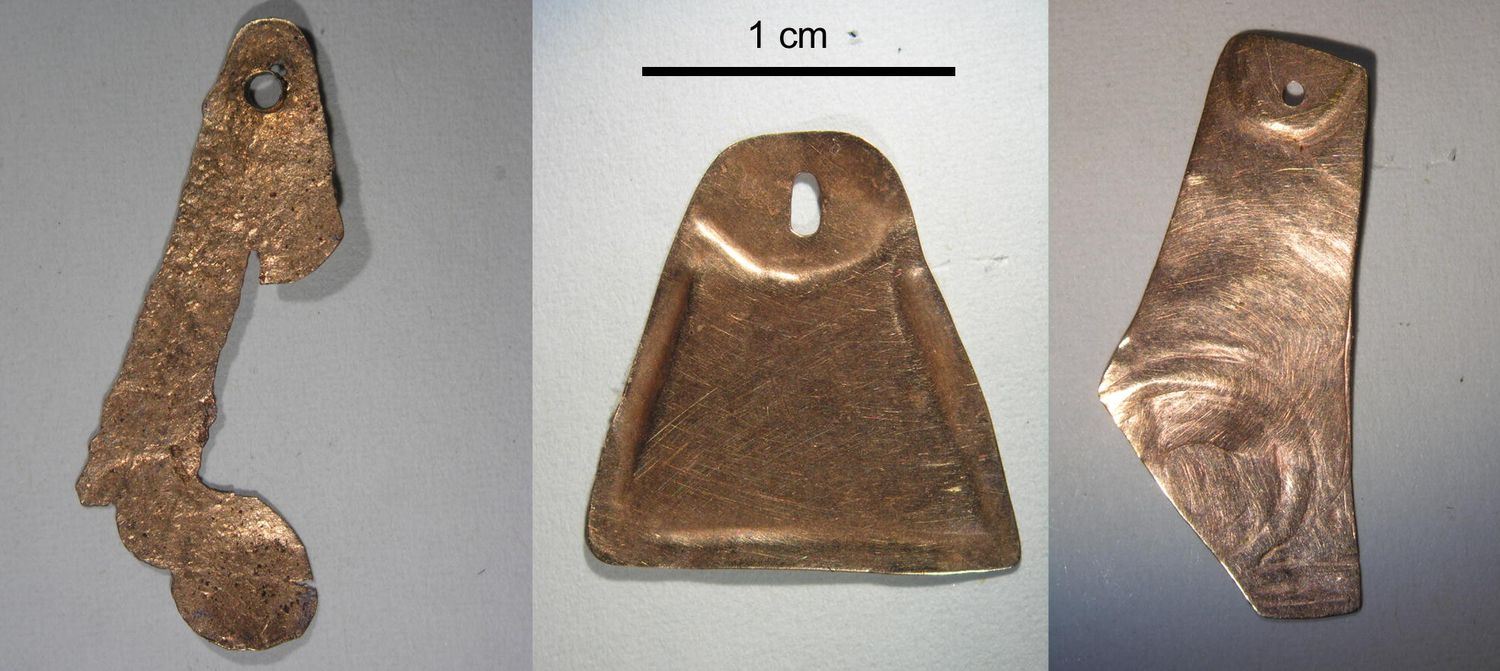
Guanín is a fascinating metal alloy that played a significant role in the history of the Taíno people. This unique blend of gold, copper, and silver was not just a material but a symbol of status and power. Guanín artifacts, often crafted into intricate jewelry and ceremonial items, were highly prized. The Taíno used these items in trade, rituals, and as a display of wealth. The allure of Guanín even caught the attention of European explorers, who marveled at its beauty and craftsmanship. Understanding Guanín offers a glimpse into the rich cultural heritage and sophisticated metallurgical skills of the Taíno civilization.
Key Takeaways:
- Guanín, an ancient metal alloy, was cherished by the Taíno people for its reddish hue and cultural significance. It played a vital role in trade, ceremonies, and artistic expression, leaving a lasting impact on Caribbean history.
- The unique properties of Guanín, such as its malleability and resistance to tarnish, made it ideal for crafting intricate artifacts. Modern research continues to uncover new insights into its composition and historical context.
What is Guanín?
Guanín is a fascinating metal alloy with a rich history and cultural significance. Used by indigenous peoples in the Caribbean, it holds a unique place in the world of metallurgy and archaeology. Let's dive into some intriguing facts about Guanín.
-
Guanín is an alloy made primarily of gold, copper, and silver. This combination gives it a distinctive reddish hue.
-
The Taíno people of the Caribbean were known for using Guanín. They crafted jewelry and ceremonial objects from this precious metal.
-
Guanín's name comes from the Taíno language, where it referred to the metal's unique composition and color.
-
Spanish explorers were fascinated by Guanín when they first encountered it. They often mistook it for pure gold due to its appearance.
-
Guanín was a status symbol among the Taíno. Chiefs and other high-ranking individuals wore it to signify their power and prestige.
-
The alloy's composition varied depending on the region and the resources available. Some Guanín artifacts contain higher percentages of gold, while others have more copper or silver.
Historical Significance of Guanín
Guanín played a crucial role in the cultural and social structures of the indigenous Caribbean societies. Its use extended beyond mere ornamentation.
-
Guanín was used in trade. The Taíno people traded Guanín with other indigenous groups, spreading its influence across the Caribbean.
-
Ceremonial uses were common. Guanín objects were often used in religious rituals and ceremonies, highlighting their spiritual importance.
-
Guanín artifacts have been found in archaeological sites throughout the Caribbean, providing valuable insights into the region's history and culture.
-
The Spanish conquest led to the decline of Guanín production. The colonizers' demand for pure gold overshadowed the local appreciation for the alloy.
-
Guanín's unique properties made it ideal for crafting intricate designs. The metal's malleability allowed artisans to create detailed and elaborate pieces.
-
The alloy's durability ensured that many Guanín artifacts have survived to this day, offering a glimpse into the past.
The Metallurgical Aspects of Guanín
Understanding the metallurgical properties of Guanín sheds light on the advanced techniques used by the indigenous peoples of the Caribbean.
-
Guanín's reddish color is due to the high copper content. This sets it apart from other gold alloys.
-
The smelting process used to create Guanín involved sophisticated techniques. Indigenous metallurgists had to carefully control temperatures and proportions.
-
Guanín's hardness varies depending on its composition. Higher copper content makes it harder, while more gold makes it softer.
-
The alloy's resistance to tarnish made it a preferred material for long-lasting artifacts.
-
Guanín's melting point is lower than that of pure gold, making it easier to work with for detailed craftsmanship.
-
The presence of silver in Guanín adds to its luster and shine, enhancing its visual appeal.
Modern Discoveries and Research
Recent studies and archaeological discoveries continue to reveal new aspects of Guanín and its historical context.
-
Modern analytical techniques have allowed researchers to determine the exact composition of Guanín artifacts.
-
Isotope analysis helps trace the origins of the metals used in Guanín, providing insights into ancient trade routes.
-
Guanín artifacts are displayed in museums around the world, showcasing the craftsmanship of the Taíno people.
-
Ongoing excavations in the Caribbean continue to uncover new Guanín objects, adding to our understanding of the alloy's significance.
-
Collaborative research between archaeologists and metallurgists has led to a deeper appreciation of the technological skills of indigenous Caribbean societies.
-
Public interest in Guanín has grown, leading to increased efforts to preserve and study these artifacts.
Cultural Impact of Guanín
Guanín's influence extends beyond its physical properties, leaving a lasting impact on the cultural heritage of the Caribbean.
-
Guanín in folklore. Stories and legends about Guanín have been passed down through generations, keeping its legacy alive.
-
Artistic inspiration. Modern artists draw inspiration from Guanín, incorporating its distinctive color and history into their work.
-
Cultural festivals often feature reenactments of Taíno rituals involving Guanín, celebrating the alloy's historical significance.
-
Educational programs in the Caribbean teach students about Guanín, fostering a sense of pride in their heritage.
-
Guanín's symbolism. The alloy represents the ingenuity and resilience of the Taíno people, serving as a reminder of their contributions to history.
-
Preservation efforts. Organizations and governments are working to protect and preserve Guanín artifacts, ensuring that future generations can learn from and appreciate this unique aspect of Caribbean history.
The Heart of Guanín
Guanín, a metal alloy of gold, copper, and silver, holds a special place in the history of the Taíno people. Its unique composition and cultural significance make it more than just a metal. It was a symbol of power, spirituality, and craftsmanship. The Taíno used it in various artifacts, from jewelry to ceremonial objects, reflecting their advanced metallurgical skills.
Understanding guanín gives us a glimpse into the rich heritage of the Taíno civilization. It reminds us of their ingenuity and the deep connection they had with their environment. This knowledge not only enriches our appreciation of ancient cultures but also highlights the importance of preserving such histories.
So, next time you hear about guanín, remember its story and the people who crafted it with such care and reverence. It’s a testament to human creativity and the enduring legacy of the Taíno.
Frequently Asked Questions
Was this page helpful?
Our commitment to delivering trustworthy and engaging content is at the heart of what we do. Each fact on our site is contributed by real users like you, bringing a wealth of diverse insights and information. To ensure the highest standards of accuracy and reliability, our dedicated editors meticulously review each submission. This process guarantees that the facts we share are not only fascinating but also credible. Trust in our commitment to quality and authenticity as you explore and learn with us.


